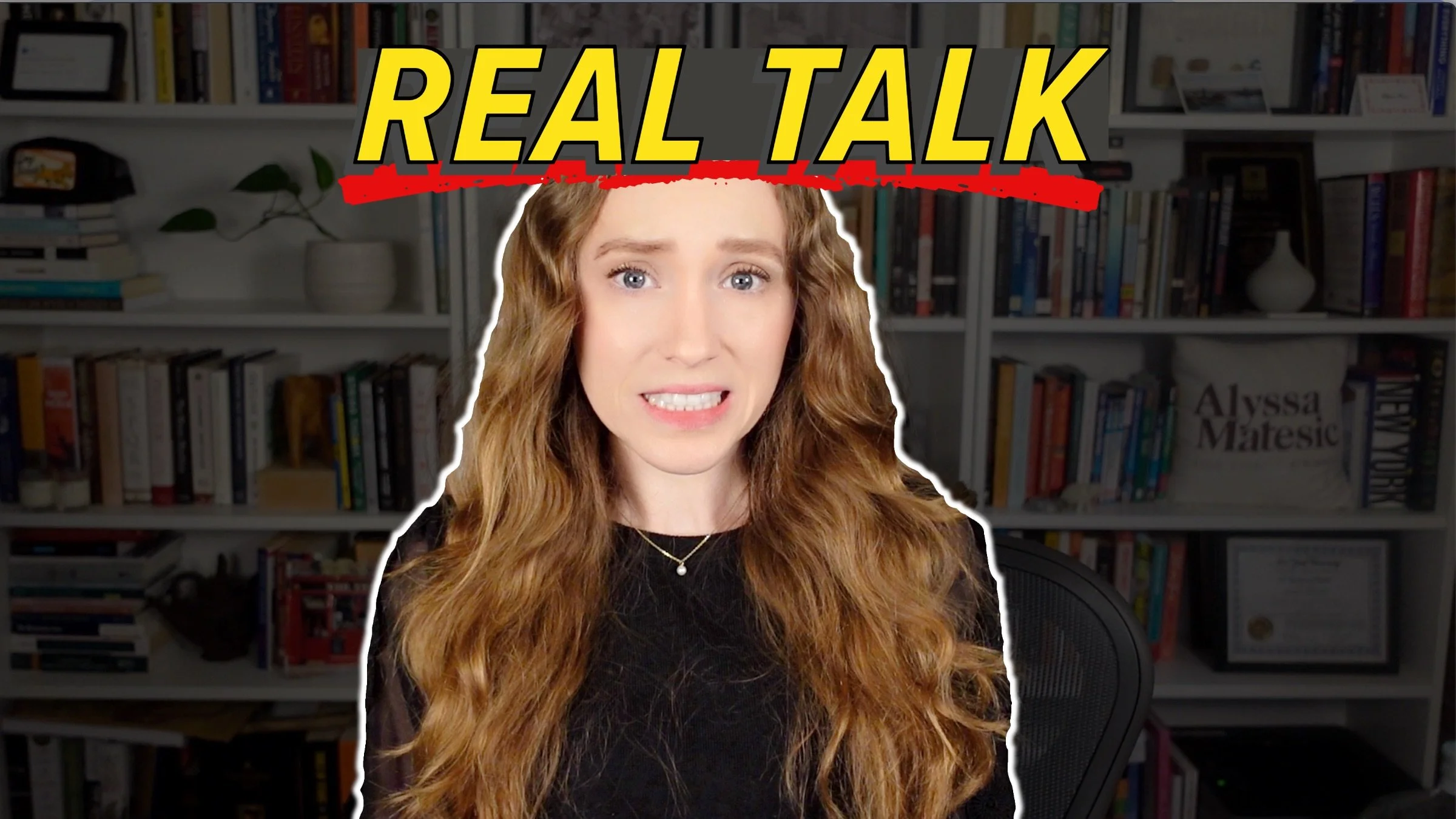3 Popular Book Genres Publishers (Still) Love
HIT PLAY OR READ THE POST BELOW:
If you are working on a book and hoping to eventually publish it, you may be wondering what book genres publishers are actually looking for. While trends come and go, there are certain genres that traditional publishers have consistently been looking for.
These three traditional publishing genres have an established presence in the book market, so if you are writing in one of them, you have a chance of success with publishing that book.
Note that this list is not comprehensive. There are obviously more book genres than just these three and if your book does not fall into one of these genres, it does not mean you won't get published. This information simply comes from my personal experience working at two of the Big Five US trade publishing houses and seeing which genres got regularly published.
1. Psychological Thrillers
The first genre that traditional publishers love is psychological thrillers. This is one of my absolute favorite genres to read and one of the genres I specialize in as an editor. With hits like Gone Girl and Girl on the Train, which not only were internationally best-selling books but also adapted into popular films, this genre has become a mainstay in the publishing industry and its popularity has not dwindled.
Psychological thrillers are suspenseful stories where a lot of the thrill and excitement is about what's going on inside the character's brains, rather than about external action. These characters may not be who they initially seem to be or who they initially present to be, and unraveling the mysteries inside those personalities is part of the excitement in reading a psychological thriller.
So, if you are writing a psychological thriller, how do you make yours stand out and how do you make it appealing to a traditional publisher? I have three tips for this.
The first is to make sure your psychological thriller has a unique twist. Unfortunately, as more and more books in this book genre are getting published, there are fewer ways to make your unique story stand out. One twist on the genre that was super original when it first arose is the use of an unreliable narrator. This is when the reader realizes partway through that the narrator is not who they appear to be. Perhaps the narrator is actually the person we've been looking for all along, such as the murderer or a long-lost family member.
If you have a twist like this in your current manuscript draft, it doesn't mean you need to throw it out and start all over again. Just keep in mind that certain tropes and patterns have become commonplace in the genre, so try to think of ways to contribute something new to the genre.
The second way to make your psychological thriller stand out is to have creative characters or a unique setting. One book that comes to mind is Tangerine by Christine Mangan. This is a great psychological thriller that is set in Tangier, a place many people don't have a lot of experience with. Setting the story in a unique place immediately makes it exciting to a publisher because it's something they — and readers — likely haven't seen before.
The last way to make a psychological thriller stand out in the genre is to have a compelling structure. One example could be switching between different characters’ points of view. While this is a technique that has been done many times, it still proves to be an effective way to structure a psychological thriller, since the reader gets to get inside several characters’ minds.
Another example would be to take a unique approach to how time is treated in your story. One novel that I love dearly is Fierce Kingdom by Gin Phillips, and this novel only takes place over the course of a few hours, so each chapter and section heading is a countdown such as “One Hour In” or “Three Hours In.” Marking the time at that minuscule level amplifies the suspense and creates a sense of urgency. So, if there is a creative way for you to play with the structure of your psychological thriller, it can make it stand out in the genre.
2. Historical Fiction
The second popular book genre that publishers are still looking for today is historical fiction. Historical fiction is always going to be a mainstay in the publishing industry because people love to be transported into different times.
For example, you may have noticed that World War II fiction is still going strong as a genre. There are many niches within WWII fiction, such as women’s stories, espionage, military technology, and family dramas that utilize WWII as their background. So if you are writing a historical fiction novel set in WWII, yes, there are going to be a lot of titles out there that are also set during the period. But it's popular for a reason. Readers are compelled by that time period and are still interested in stories that take place in it.
Historical fiction also works well for series. There are many authors who have written novels that follow different generations of a family, like Martha Hall Kelly, so if you are interested in immersing yourself in a series, historical fiction is a great place to do so. If the reader gets hooked on your writing style or your characters’ families, they are likely to follow you through all your books, story by story.
If you're writing a piece of historical fiction, you might be wondering how to make sure your novel stands out among the rest. The first bit of advice I have is to try and have your novel shed light on a little known event or a little known facet of our history. This could be something that perhaps never made it into textbooks but you have uncovered it through some type of primary research, or maybe you have an ancestral family background that makes for a compelling and interesting story.
Another way to make your historical fiction novel stand out is to tell it from the perspective of a character that we don't see often. There's the saying, “history is written by the winners.” So, who are the “losers” in the time period you're writing in? You could integrate their point of view and show us how they experience the time differently.
Lastly, with any piece of historical fiction, you need to do meticulous research so that you convey the time period accurately. There are going to be readers who know all the ins and outs of that time period, and they will know if you are portraying it authentically. By making sure you’re honest to the time period, it will make your historical fiction novel stand out by virtue of being accurate.
3. Contemporary Women’s Fiction
The third genre that is still super popular among publishers is contemporary women's fiction. I don't love the term “women's fiction,” but it is still used widely in the industry to describe novels that are primarily from a female point of view. The intended readership is also primarily women.
These books usually center around a journey of a female character and showcase her personal development. Contemporary women's fiction can be serious and dramatic, or lighthearted and fun, so it ranges the whole spectrum of tone.
Many works of contemporary women's fiction also have book club appeal, which means they are ripe for discussion. These stories can cover a variety of themes that people want to talk about while still being entertained.
So if you're writing a piece of contemporary women's fiction, what can you do to make it stand out?
The first element you’ll want to incorporate in your novel is a strong, unique voice. Because this genre is so character-driven, it is important the reader immediately connects to the protagonist’s voice and wants to be a part of their journey.
Secondly, you need to ensure you have authentic and resonant themes that readers feel like they can relate to. Whether your novel centers around themes of family, loss and grief, or about growing older, themes are a part of the human condition and experience, which will help readers delve deep into rich and engaging book club discussions. A writer who does this well and weaves in resonant themes is J. Courtney Sullivan.
The last element you should consider to make your piece of contemporary women's fiction stand out is to make sure it is swift and readable. People also call these kinds of books “beach reads” for a reason. They want to be able to relax on the beach and enjoy your book in one sitting.
Of course, you don't have to necessarily cut your book down to make it more consumable. But, by making it read swiftly and making sure it has a lot of momentum, readers can quickly immerse themselves in your story and feel as if they’re there in the action.
What About Other Book Genres?
I suspect there are some genres you're surprised I didn't talk about or you wish that I discussed in this article. Of course, there are many other genres you can write in, and those can be just as commercially successful as these three. Also, if your novel doesn't fit squarely into a predetermined genre or it's a hybrid of multiple genres, that is not necessarily a bad thing. So don't feel like you need to classify your novel into one single genre. Publishers and literary agents are always looking for the next hit genre in the industry, so it can definitely be a positive thing if your project doesn't fit the predetermined molds.
I hope this gave you some insight into what publishers are looking for and what traditional publishing genres will continue to resonate with readers through the years to come.
Thanks so much for reading and happy writing!





